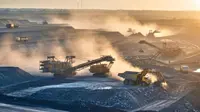Kapil Sibal inaugurates tsunami early warning system
15 Oct 2007
Recognizing the imperative to put in place an early warning system for mitigation of oceanogenic disasters that cause severe threat to nearly 400 million of the coastal population in the aftermath of the tsunami havoc of 26 December 2004, the ministry of earth sciences (MoES) had taken up the responsibility of establishing the national tsunami early warning system.
The warning system has been established by MoES as the nodal ministry at a cost of Rs.125 Crore in collaboration with department of science and technology (DST), department of space (DOS) and the council of scientific and industrial research (CSIR).
Tsunamigenic zones that threaten the Indian coast have been identified by considering the historical tsunamis, earthquakes, their magnitudes, location of the area relative to a fault, and also by tsunami modelling. The east and west coasts of India and the island regions are likely to be affected by tsunamis generated mainly by subduction zone related earthquakes from the two potential source regions, viz., the Andaman-Nicobar- Sumatra island arc and the Makran subduction zone north of Arabian Sea.
The Indian Tsunami Early Warning System comprises a real-time network of seismic stations, bottom pressure recorders (BPR) and tide gauges to detect tsunamigenic earthquakes and to monitor tsunamis.
The early warning centre receives real-time seismic data from the national seismic network of the lndian Meteorological Department (IMD) and other International seismic networks. The system detects all earthquake events of more than 6 magnitude on the Richter scale occurring in the lndian Ocean in less than 20 minutes of occurrence.
BPRs installed in the deep ocean are the key sensors to confirm the triggering of a Tsunami. The National Institute of Ocean Technology (NIOT) has installed four BPRs in the Bay of Bengal and two in the Arabian Sea. In addition, NIOT and Survey of India (SOI) have installed 30 tide gauges to monitor the progress of tsunami waves.
Integrated Coastal and Marine Area Management (ICMAM) has customized and ran the Tsunami Model for five historical earthquakes and the predicted inundation areas. The inundated areas are being overlaid on cadastral level maps of 1:5000 scale. These community-level inundation maps are extremely useful for assessing the population and infrastructure at risk. high-resolution coastal topography data required for modelling is generated by the National Remote Sensing Agency (NRSA) using ALTM and satellite data generated by Cartosat.
INCOlS has also generated a large database of model scenarios for different earthquakes that are being used for operational tsunami early warning.
Communication of real-time data from seismic stations, tide gauges and BPR''s to the early warning centre is very critical for generating timely tsunami warnings. A host of communication methods are employed for timely reception of data from the sensors as well as for dissemination of alerts. Indian Space Research Organisation (ISRO) has made an end-to-end communication plan using INSAT. A high level of redundancy is being built into the communication system to avoid single point failures.
INCOlS is equipped with state of the art equipment, computational and communication infrastructure that enables reception of real-time data from all the sensors, analysis of the data, generation and dissemination of tsunami advisories following a standard operating procedure. Seismic and sea-level data are continuously monitored at the early warning centre using a custom-built software application jointly developed with MIS Tata Consultancy Services (TCS) that generates alarms alerts in the warning centre whenever a pre-set threshold is crossed.
Tsunami warnings watches are then generated based on pre-set decision support rules and disseminated to the concerned authorities for action, following a standard operating procedure. The efficiency of the end-to-end system was proved during the large undersea earthquake of 8.4 M that occurred on 12 September 2007 in the Indian Ocean.
The National Early Warning Centre will generate and disseminate timely advisories to the control room of the ministry of home affairs for further dissemination to the public. For the dissemination of alerts to MHA a satellite-based virtual private network for disaster management support (VPN DMS) has been established.
This network enables early warning centre to disseminate warnings to the MHA, as well as to the state emergency operations centres. In addition, messages will also be sent by phone, Fax, SMS and e-mails to authorised officials. In case of confirmed warnings, the National Early Warning Centre is being equipped with necessary facilities to disseminate the advisories directly to the administrators, media and public through SMS, e-mail, Fax.
The
cyclone-warning network of IMD and electronic ocean information boards of INCOlS
could be effectively used for dissemination of warnings directly to the public.
Periodic
workshops will be organized for the user community to familiarize them with the
use of tsunami and storm surge advisories as well as inundation maps. Easily understandable
publicity material on earthquake, tsunami and storm surges has been generated
and will be distributed to the general public.






















